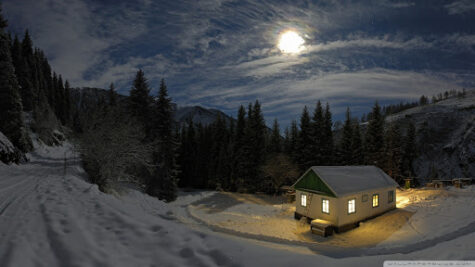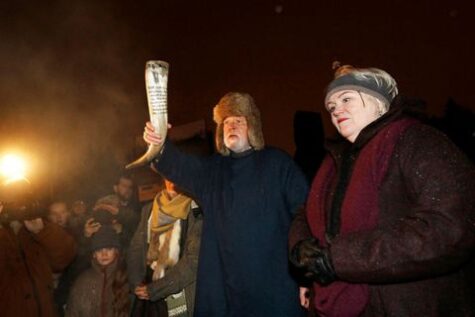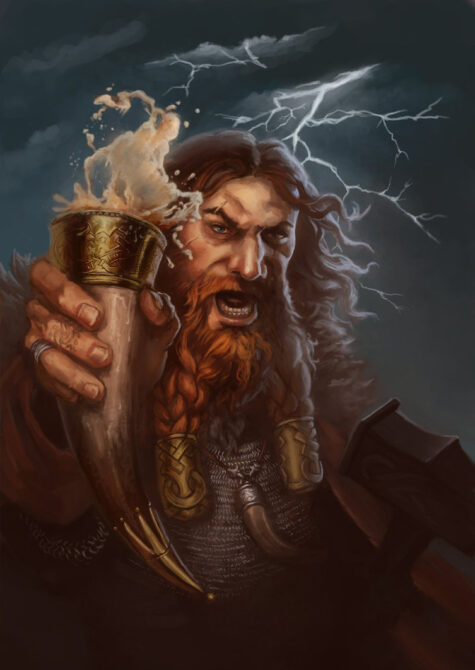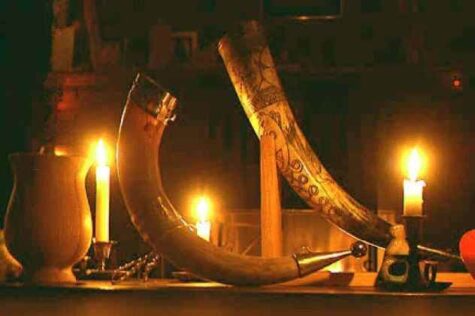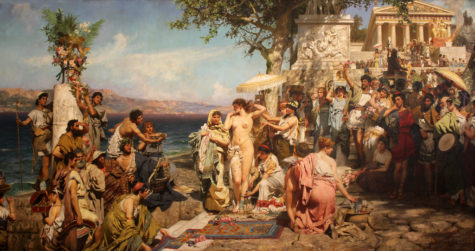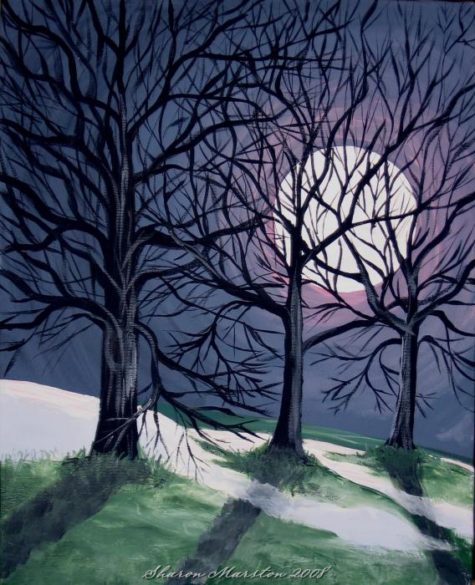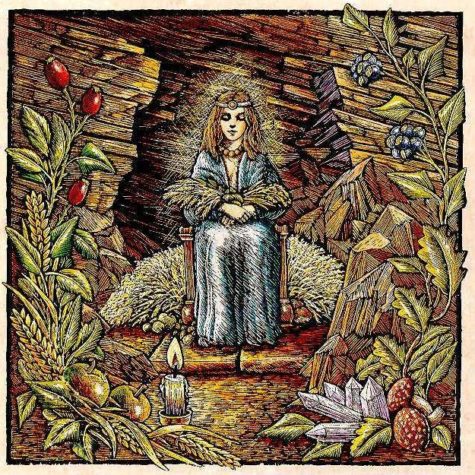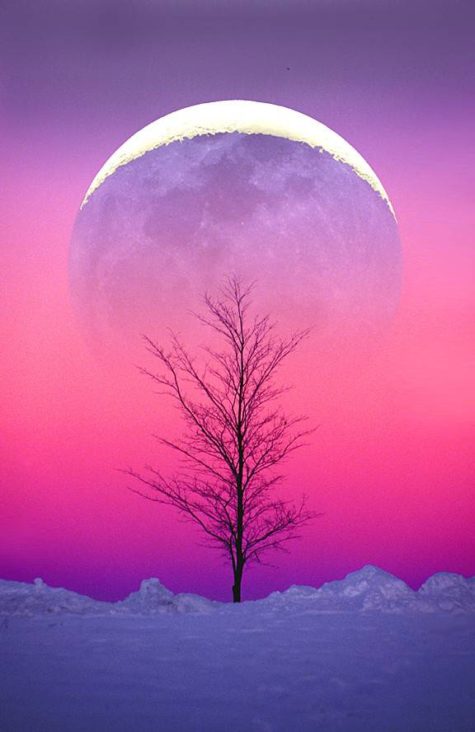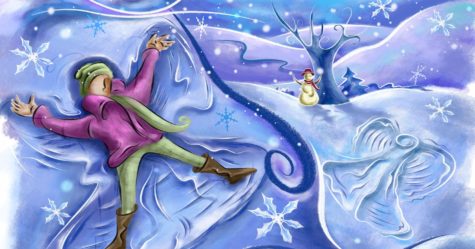Winter
In the Old Icelandic Calendar, winter begins on the Satyrday between Hunting 11th and 17th. This festival marks the beginning of winter, which was often celebrated around the middle of October. Winter Nights celebrates the bounty of the harvest
- Also referred to as: Vetrablot, Vetrnætr, Winterfylleth, Veturnætur, Winter Finding, and Winter Day.
Winter Nights is a more accurate term, considering that the passage of time was marked by nights, not days. An example of this can be seen from Anglo-Saxon times as it applies to the English word ‘fortnight’ as a reckoning of time for two weeks.
Just as traditional Jewish sabbat begins at sundown on Friday until sundown on Saturday… it appears that the festivities traditionally kicked off at night. This allows participants to work to prepare for the party during daylight hours too. On occasion you may even see reference to the term Winter Finding.
Some groups use this as being synonymous and interchangeable with the term Winter Nights. But others will call the harvest celebration at the autumnal equinox Winter Finding, and call the later October celebration Winter Nights instead.
Though we know the various names of the holiday, we don’t really know how people celebrated Winternights. Some people honored Freyr at this holiday, where He was given a sacrifice to thank him for the year’s harvest.
Some traditions honor Freya and the fertility and protective spirits called Disir, that She leads (often the Disir are seen as our female ancestors). Glory is given to Freya, a libation of ale, milk, or mead was poured into the soil as an offering to the Disir and the Earth itself.
We know that in Sweden, an event called an Alfarblot was held around the same time of year. It was a private event where ale was served and livestock were likely sacrificed. As Freyr is the lord of Alfheim, this event may be related to Winternights.
Some people honored Odin instead; some honored the dísir (female ancestors), some honored the alfar (elves; or male ancestors). Some people likely did a mix of all of the above.
When celebrating Winternights with a definite disir/alfar focus. Food is shared at a potluck based on recipes passed down to us from our ancestors or foods that they preferred. A sumbel is in their honor, honoring specifically those who have passed on in the last year, both animals and humans, and then sharing the stories of the food we brought, and of our ancestors of blood and of spirit. This can be an intimate, moving ritual, and a great way to start the winter season.
- A Sumbel is a formal drinking ritual composed of toasting, hails, oath-taking, the recitation of poetry or song, and other forms of verbal expression.
A Winternights sumbel might start with a round to Freyr to thank Him for the past harvest and to ask for prosperity in the days ahead. A round is included for the recently departed and for our ancestors of blood and of spirit as well.
So today we have a range of practice as it applies to this time of year. Some opt to celebrate it at the time of the autumnal equinox for sheer simplicity. But many others will instead decide to observe Winter Nights in October as that’s more in keeping with the traditional calendars.
Others split the celebration up, observing a Harvest-tide celebration in September, and then in October they will instead opt to specifically come together to honor the ancestors.
If you have children, incorporating ancestor veneration at this time helps to sync up to the Halloween and Day of the Dead décor that is on the market, and allow the children to have some similar dialogue among their peers at school. What Winternights does have in common with modern Samhain and Day of the Dead traditions, is that we both honor ancestors with their favorite foods and drink.
A Blot for Winternights
I hope all Heathens have a satisfying Winternights for both the living and the dead this year . Hail the disir! Hail the alfar! Hail Freyr!
- Hallowing:
Thunar, Guardian of Asgard and Midgard, We ask you to ward this stead well for Winternights. Hail Heimdall warder of Bifrost we ask that you hold us in your great sight.
- Purpose:
We gather to honor the Aesir and Vanir on this Winter Night and give thanks for the fruits of this past year and the Harvest we have gathered from the Earth. We also look back on the past year and measure our time that it was used wisely; to look at the future to find our way; like the Ice of time scrubbing away the impurities to leave behind the clear work.
We ask the dwellers of Asgard to give us the strength to and to help us provide for our kinsman in preparation for the long Winternachten yet to come.
- Hails:
Hail Wodan, The All Father, for your wisdom and forethought in guiding us forward through the winter to come and for the knowledge you have shared with us.
Hail Wodan!
Hail to Fro Ing for the bountiful harvest you have brought to us this eve.
Hail Fro Ing!
Hail to Freya for the love and life we hold to our hearts.
Hail Freya!
Hail to all the Ases and Wanes for the mighty work that you do.
Hail the Ases and Wanes!
And Hail to our Ancestors and Wights of the land. Hail to the All who have crossed Bifrost before.
Hail the Ancestors!
- Welcoming:
We welcome all the Ases and the Wanes. We welcome all the Wights, Alfs and Ancestors who have gone before us. We Welcome all the Wights and Landvaetter to witness this rite rightly done so that you shall see the truth in our hearts.
Heilsa all!
The time of Winternights marks the passing of Sunna farther down into the sky. This time of year marks the Mother Earth going to sleep to be rested for the coming Spring; for Fro Ing to renew the fertility of the Earth to bring forward the crops of our folk.
We look forward to Yule that is fast approaching. And we honor our ancestors that have gone before us. We look back over this past year with pride of the work rightly done. We look forward to prepare for the coming of winter, to protect our hearth and Kin from the cold of the frost giant called Winter, to open our hearths to those in need.
With this hallowed drink, brewed with the hand of Aegir the Brewer of Asgard we give our toasts:
- Wassail All!
Hail to the Aesir and Vanir!
Hail to the Alfs and the Dises!
Hail to our Ancestors!
Hail to the Landvaetter and all Wights of weal!
We now offer this sacrifice and return it to the Earth.
- Personal Hails!
Heilsa!
- The Blessing and Ending
We thank the Gods and Goddesses, the Aesir and Vanir for the gifts that we have and the gifts we may receive, May you find us fitting to receive them.
Heilsa All!
Sources:
- Asatru Utah
- Patheos
- Wyrd Designs
- Erich Shall
- Grundair Karlson
Poseidon was once worshiped in every part of Greece as a God of general importance to the community. In ancient Greece, the feast day in his honor was widely celebrated at the beginning of the winter.
POSEIDO′NIA (ποσειδώνια), a festival held every year in Aegina in honour of Poseidon. It seems to have been celebrated by all the inhabitants of the island, as Athenaeus calls it a panegyris, and mentions that during one celebration Phryne, the celebrated hetaera, walked naked into the sea in the presence of the assembled Greeks. This was possibly because in Greek mythology, the sea god Poseidon is one of the most lascivious of the gods, producing more offspring than other note worthily randy gods.
Greek calendars vary from place to place, but in Athens and other parts of ancient Greece, there is a month that corresponds to roughly December/January that is named Poseideon for the sea-god Poseidon. The month of Poseidonia’s most anticipated and most important festival is the feast of the Poseidonia, a winter festival in honor of Poseidon. Since Poseidon is a sea god it is curious that his festival would be held during the time the Greeks were least likely to set sail.
It was celebrated with the pouring and drinking of wine, merriment, bonfires, and most likely a form of gift giving. Not much more is known about the way it was celebrated.
On a larger scale, “there was a festival once every fifth year at Sunium in honor of Poseidon – evidently, then, a major event. Also, animal offerings to Poseidon were a common feature at the feast days of other gods, including the “festival at the temple of Hera on the 27th of Gamelion,” which honored the goddess “together with Zeus the Accomplisher, Kourotrophos and Poseidon.”
Related Festivals:
- Haloea – Jan 8 thru 9th
- Poseidonia of Aegina – A Midwinter Festival lasting as long as 2 months
Collected from various sources
The last moon phase of the year is the Big Winter Moon in December, also called Long Nights Moon, or the Cold Moon.
Correspondences:
- Colors: White, red, and black
- Gemstones: Obsidian, ruby, serpentine
- Trees: Pine, holly
- Gods: Minerva, Osiris, Athena, Persephone and Hades
- Herbs: Ivy, mistletoe, holly and berries, cinnamon
- Element: Fire
As the days get shorter and Yule approaches with the longest night of the year, we force ourselves to get through the darkness because eventually we will see the sunlight and warmth again. Think about the things in your life that you’ve had to endure. Sometimes, a part of us must die in order to be reborn. Now is the perfect time for spiritual alchemy — time to evaluate your life, and know that you’ll survive the dark times.
If you’ve already put the darkness behind you, take your good fortune and share it with others. When it’s cold outside, open your heart and home to friends and family. Reach out to people who might be suffering from the chill of winter, either spiritually or physically.
source: about.com
Eriskegal, great black mother of the House of Dust,
you who wait at the end of every life,
cast your dim black gaze upon the just
and, blinking once, give them rebirth.
While November is the eleventh month on modern calendars, it was once the ninth, as evidenced by the Latin number novem. In the United States, November contains one of the oldest national holidays – Thanksgiving.
Actually, festivals of gratitude combine with late harvest festivals in many parts of the world; at this time people pray for divine providence and give thanks for the earth’s bounty. Other predominant festivals during early winter months include commemorative rites for the dead and rituals that protect individuals or whole communities from evil influences.
For people living in four-season climates, the snows begin to accumulate and winter winds decorate the windows with frosty reminders of the outside chill. Because of this, magic for continued health is fitting during November, as are spells and charms for protection.
Wintery months also seem to be a time for introspection – to us divination tools for foresight and preparation, to seek guidance within, and to ask the Goddess for a special spiritual vision to carry us through the last months of the year.
Source: 365 Goddess
Image from: 2008 Witches Calendar
November’s Full Moon beckons us to look deep within. With the Sun in Scorpio, the Snow Moon is a potent time to look beyond the obvious. This is an excellent time for dreamwork and lends its energies easily to meditation and divinatory efforts as well as projects that require endings. Use the Snow Moon’s energy for setting magickal goals into motion, as well as planning for the reinvention of your life.Take advantage of this transitional period to set your goals for the future in motion.
~From: 2008 Witches’ Spell-A-Day Almanac
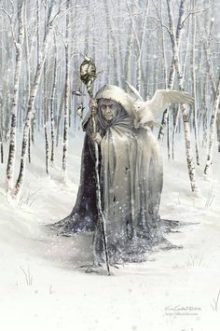 Là Fhèill Brìghde is the day the Cailleach gathers her firewood for the rest of the winter. Legend has it that if she intends to make the winter last a good while longer, she will make sure the weather on February 1 is bright and sunny, so she can gather plenty of firewood to keep herself warm in the coming months. As a result, people are generally relieved if February 1 is a day of foul weather, as it means the Cailleach is asleep, will soon run out of firewood, and therefore winter is almost over.
Là Fhèill Brìghde is the day the Cailleach gathers her firewood for the rest of the winter. Legend has it that if she intends to make the winter last a good while longer, she will make sure the weather on February 1 is bright and sunny, so she can gather plenty of firewood to keep herself warm in the coming months. As a result, people are generally relieved if February 1 is a day of foul weather, as it means the Cailleach is asleep, will soon run out of firewood, and therefore winter is almost over.
Visit The Powers That Be for more information about the Cailleach,
The tenth day of Christmas (Jan 3) is Snow Day. On this day we pay our respects to snow. No depiction of Christmas and Midwinter celebration is complete without it. Snow has so many qualities and so many aspects that it is not surprising that the Inuit people have literally hundreds of words that describe its variety of colors and texture.
So today let us devote ourselves to the contemplation and honoring of the million small crystals that drift across the lands of the Northern hemisphere at this time of the year. And, if we have no snow to look at and celebrate, let us at least remember it in all its fine whiteness, cancelling out the darkness of Midwinter and transforming even the grayest and bleakest of scenes into a place of magic.
Source: The Winter Solstice
